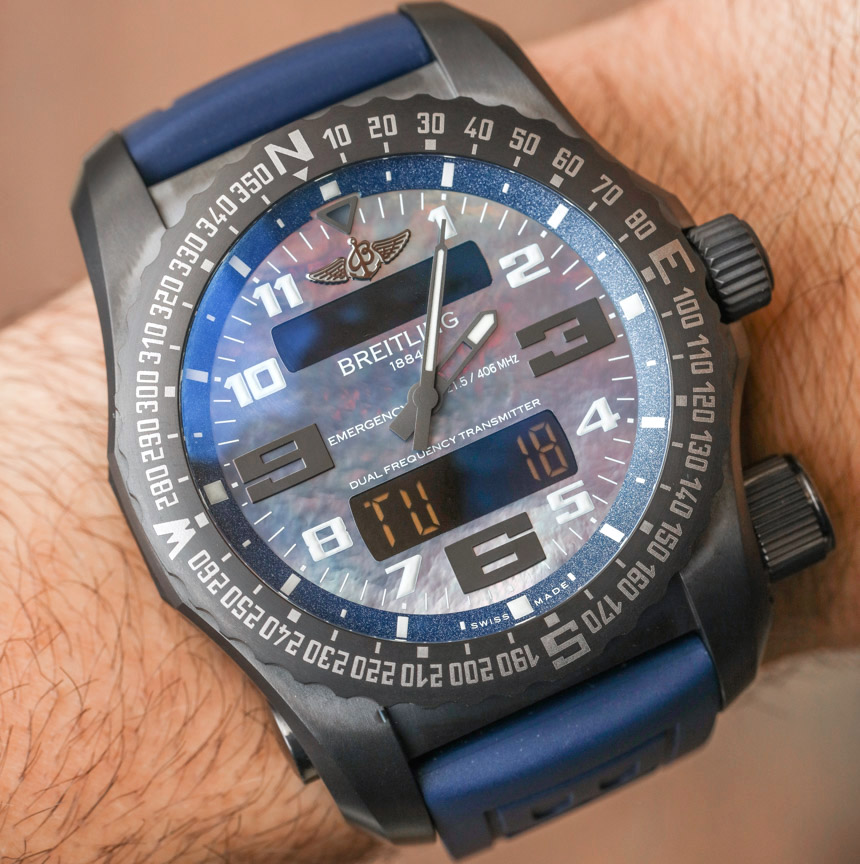
“Do not unscrew the antenna cap. We repeat, do not unscrew the antenna cap unless it is actually an emergency.” This was more or less the message that Breitling kept telling me when I was reviewing the Breitling Emergency II watch a few months ago. If you know anything about what Breitling’s iconic Emergency watch does, then the reason for their caution shouldn’t be difficult to understand. The Emergency II watch, like the original Emergency before it, is a timepiece with a distress beacon built into it – and such functionality makes it among the most interesting and arguably “special” modern high-end watches of our time.
There is a lot to say about the Breitling Emergency II watch and its modern history, which in some instances is actually more interesting than the watch itself. You might recall that it was years ago back in 2013 when Breitling first debuted the Emergency II timepiece. Shortly thereafter, aBlogtoWatch went hands-on with Breitling’s latest “emergency rescue watch” here. It was not until a few years later that the watch was available for purchase, and even longer after that until the Breitling Emergency II was legally available for sale in the United States.
Breitling actually needed to work with some special lobbyist-style people in Washington D.C. to convince the US Government to make an exception to their device communication rules in order for the Emergency II to be legally sold. The reason is because the Emergency II is the only wearable device of its kind to be battery-powered and transmit dual frequency emergency broadcast signals (they call it a “PLB,” which means “Personal Locator Beacon”). I don’t recall all the details since it was a while since I looked at the paperwork, but I believed Breitling in their story that the process to get the Emergency II available for sale in the US was both arduous and expensive.
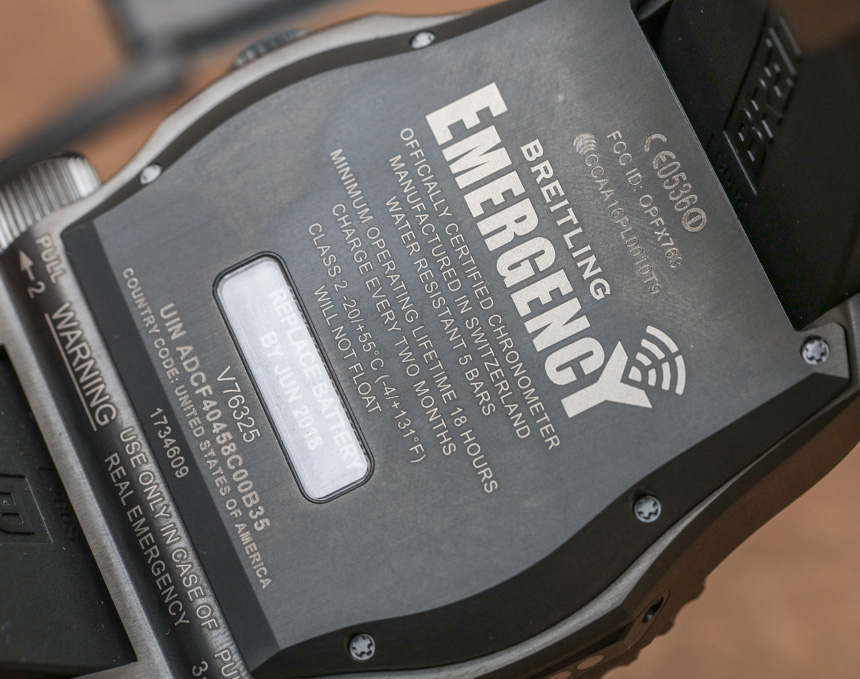
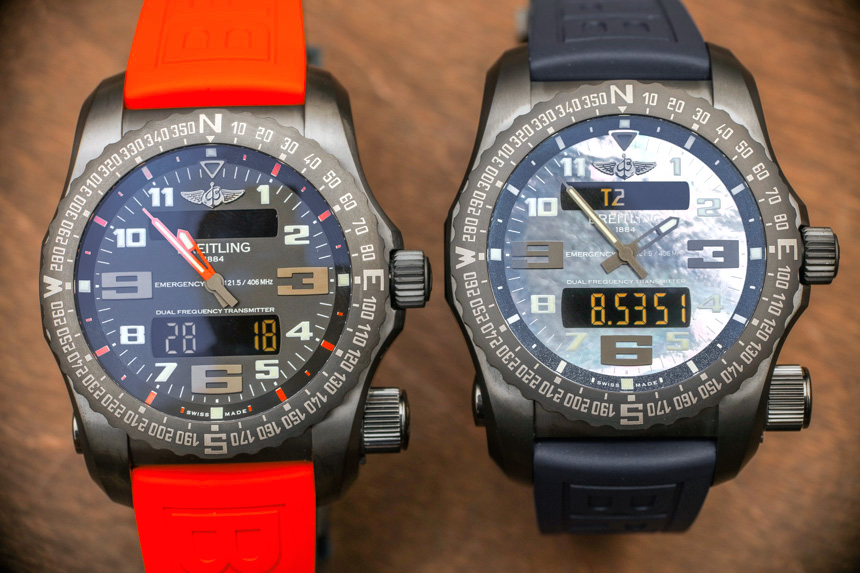
In the 1990s when Breitling’s original Emergency was popular, it was among the cooler luxury men’s watches around. The brand known for military-style pilot watches had a high-tech timepiece that could save your life if you were stranded. Few people actually needed this tech, while most wore it for the coolness factor. With that said, Breitling does have stories of people who actually used the emergency beacon functionality to be saved. Pretty cool, and the tech is built on the common frequencies other emergency signal devices all over the world use, and that agencies all over the world monitor.
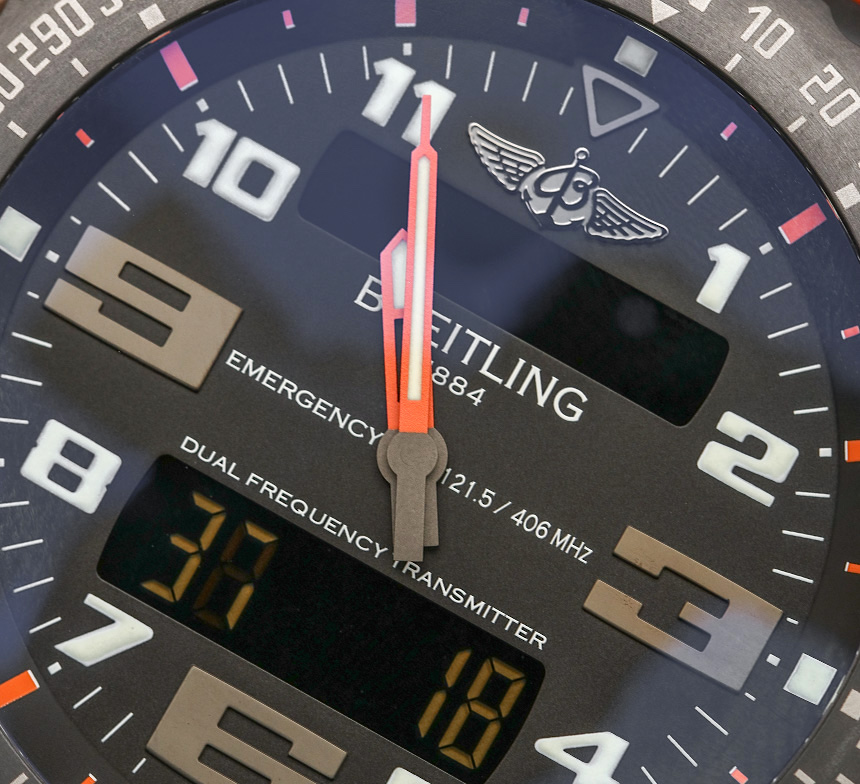
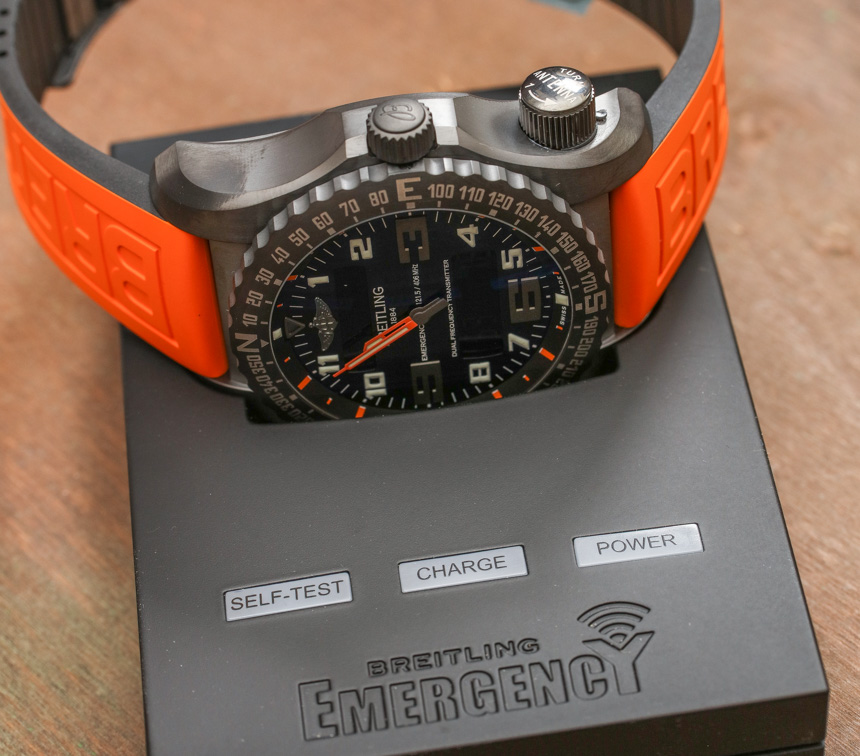
The Emergency II differs from the Emergency I in a host of ways. In many ways, the simplicity of the original Emergency is missed because it was more wearable, and one didn’t really need to worry about the battery as much. On this latter note, the Emergency II doesn’t have a short battery life (they claim 2-3 years when fully charged assuming you don’t use the antenna of course), but rather comes with a rechargeable battery and docking station. The idea is that before a critical mission, the user will fully charge the battery because if they need to use the emergency beacon, it will need a lot of juice. So in a lot of ways, this is sort of an upgrade, and the new watch uses more energy for the signals since it has two of them to send pings on.

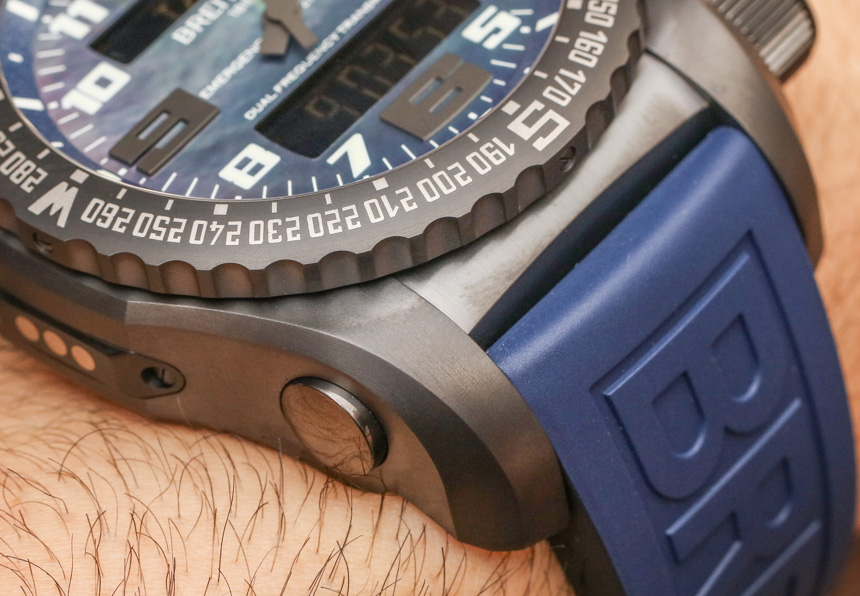
Functionally, the main benefit of the Emergency II is that it can now broadcast emergency signals to both the legacy 121.5 MHz frequency, as well as the more modern 406.040 MHz signal. The previous frequency is limited to perhaps 100 miles or so from a receiver station, and while it is still useful in many instances, the 406.040 MHz frequency is the one that most “survivors will be keen to be heard on.”
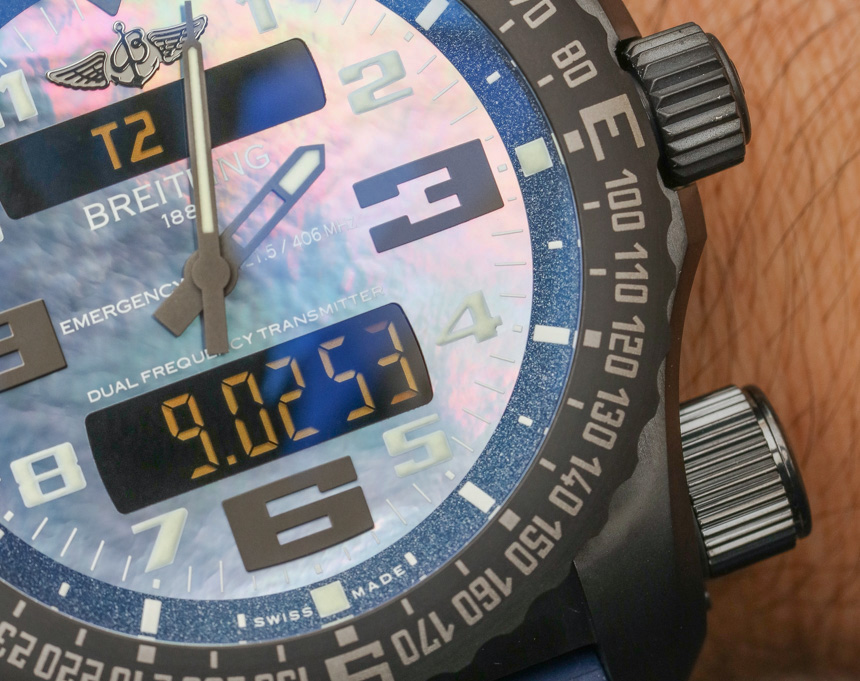
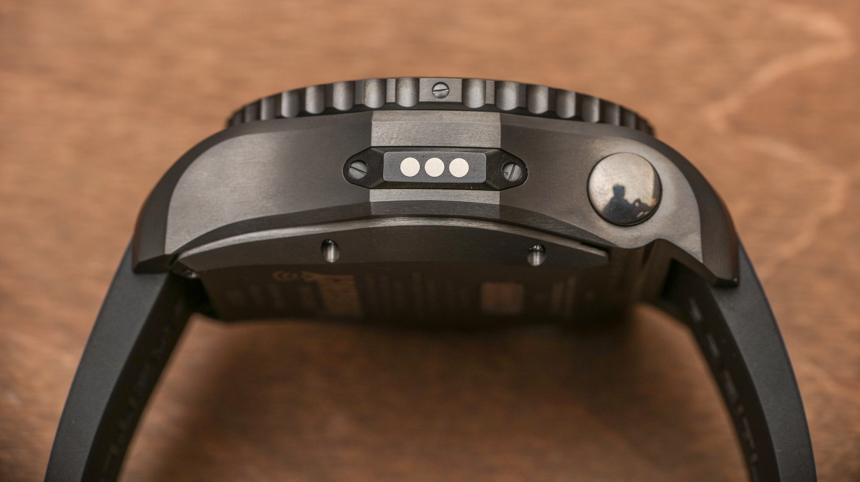
This is because these days, Cospas-Sarsat satellite systems monitor these signals, which can be “heard” anywhere on the globe. They also offer more precision in where the beacon is coming from, allowing emergency rescue teams to more easily find the location of the signal. It is for this reason that Breitling was so touchy about the antenna system on the watch. Assuming someone accidentally activated the beacon (which happens as soon as the antenna is pulled out of the case), the signal would be picked up by emergency rescue personnel – and they would be on their way to you. The bill associated with this activity is not insignificant.

I seem to recall Breitling telling me that they will cover the costs (of the rescue team) associated with an actual emergency, assuming the watch is used in the process and they get the right to discuss the role of their watch in the rescue. I am not sure if this policy is still around, but you can understand the sex appeal of wanting to share via marketing materials how your luxury timepiece helped in the thrilling rescue of its wearer.
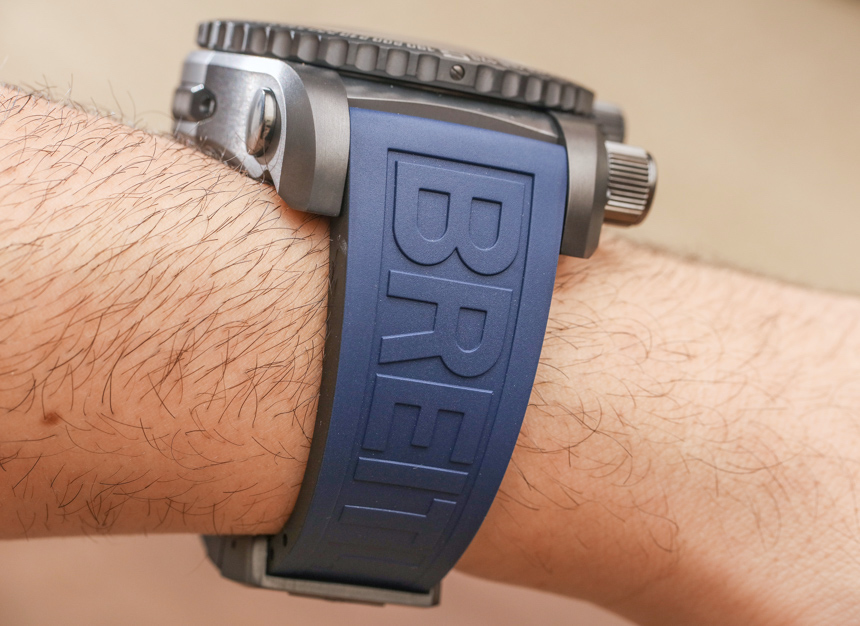

The promise of the Emergency II to wearers is that assuming you are in an emergency situation (and you have enough battery life in the watch) you can be rescued from pretty much any place on the planet. If that happens, then suddenly your circa $15,000 USD timepiece investment suddenly makes a lot of sense. More so, if you know that you’ll need the watch and have one, then it is easy to be prepared. With that said, where the Emergency II has some issues over the original is in the ability to wear it on a daily basis. This is because while it is surprisingly wearable, the Breitling Emergency II is a rather hefty timepiece.
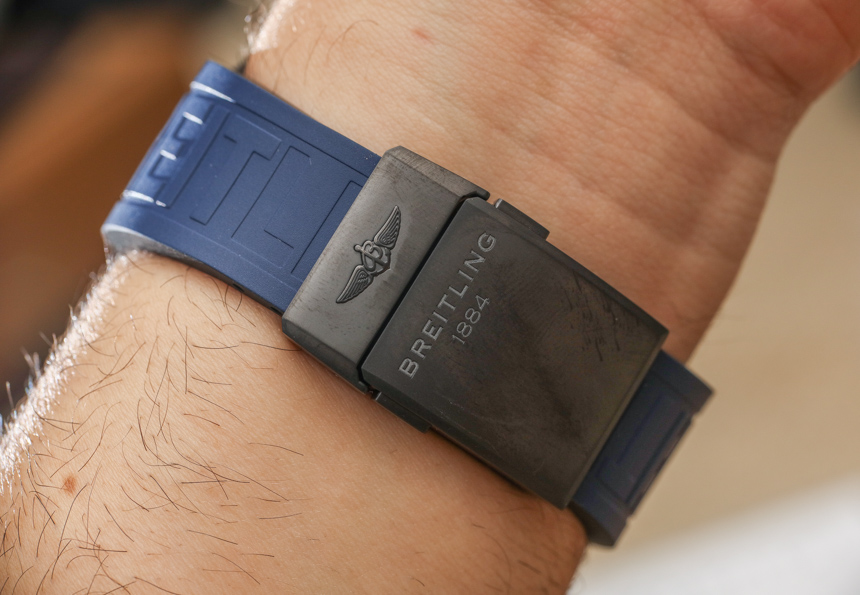
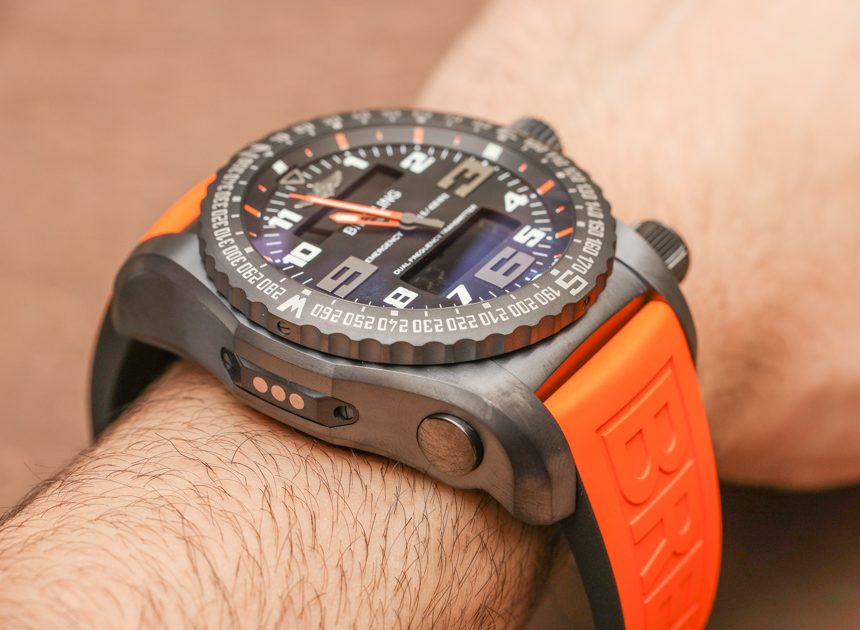
51mm wide and 21.6mm thick makes for a beast of a timepiece to wear on a regular basis for most wrists. The case is produced in high-grade titanium and doesn’t weigh too much at about 144 grams (actual weight will depend on whether you wear it on the matching titanium bracelet or rubber strap). With that said, unless you really enjoy this size and feel and you can pull off this watch with your normal casual attire, the Breitling Emergency II will be mostly reserved for “weekend warrior attire,” or for serious adventure use when the availability of the PLB functionality is deemed useful.
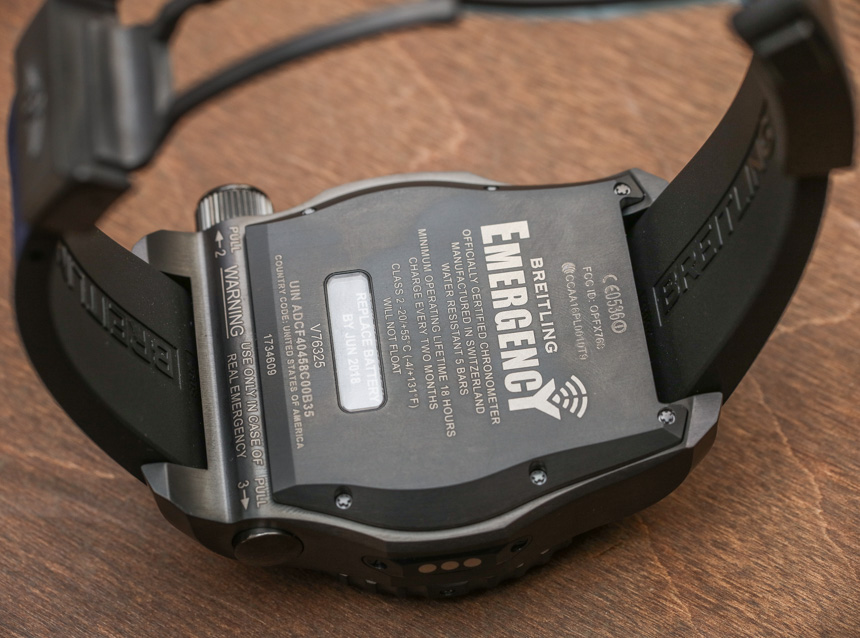

In that sense, Breitling has created an even more niche product with the Emergency II compared to the original. You’d see guys wearing the original Emergency on a regular basis since it was smaller and also a lot cheaper. With the new higher price of the the more sophisticated, and clearly larger Emergency II, Breitling has perhaps created a more useful wearable emergency locator device, but it doesn’t make for as good of a daily wear option – again, for most people.
